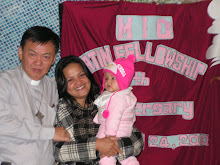Bless thou, the words of my lips and the meditations of our hearts that they be of profit to us and acceptable to thee, oh our Rock and our Redeemer. Amen.
Where the Gospel according to Matthew ends, the Christian faith begins - in the resurrection of our Lord.
The resurrection exhausts our capacity to imagine and it pushes our reasoning ability to the breaking point. However we don't have to explain the resurrection. Rather it explains us, it establishes who we are and why we are here today. Because Easter happened, because the resurrection happened, the church happened.
The story of Easter is so familiar that we sometimes fail to hear some of the details of the account. Today I want us to look at three of those details as they are found in Matthew's account of the first Easter morning.
First, the stone was rolled away - not to let Jesus out - but to let us in.
I say this because the idea that God rolled the stone away from the door to let Jesus escape is inconsistent with the resurrection appearances of Jesus recorded elsewhere in the scriptures - appearances in which he suddenly appeared in the midst of the disciples, even when they were behind closed doors. Closed doors never kept Jesus in or out.
Matthew makes this clear in today's reading. In his account of the resurrection it was after Mary Magdalene and the other Mary had come to the tomb that "there was a great earthquake, and an angel of the Lord rolled away the stone and sat upon it."
For centuries the curious have always wanted to look into the dark depths of death, but the tomb has been sealed with secrecy. The tomb has always mocked us. It has always stood as the "dead end" of all our efforts to peer beyond this life into the life to come.
The angel tells the two women on the first Easter morning to look inside the tomb, saying to them: "do not be afraid, I know that you are looking for Jesus who was crucified. He is not here; for he has been raised - as he said. Come, see the place where he lay."
Easter rolls the stone door of the tomb away for us so that we might penetrate the mystery of death. It makes of the tomb a tunnel - a tunnel into the heart of the eternal and shows us that the holy heart of God is love and life. God rolls the door of the tomb away not to let Jesus out - but to let us in - to allow us to see that Christ's promises are true.
Second - the tomb is not completely empty - Christ's body is not there, but the place is filled with the words of the angel, the words we just heard, the words that say, "Look, he is not here, he is risen." The words that continue on saying:
"Come, see the place where he lay. Then go quickly and tell his disciples - he has been raised from the dead and is going ahead of you to Galilee, and there you will see him."
If the women on that first Easter morning had looked into an empty and silent tomb, then our resurrection faith would be a belief based on human speculation, an assumption of the moment, an argument based on negative evidence.
But no! Our faith is based on a word spoken to us by God. It is based on God's holy promise, spoken by Christ before he died, and upon God's holy assurance - spoken by the angel on the first Easter Sunday.
That same word that echoed and re-echoed in that Easter tomb still fills the emptiness of world today. "He is risen". The tomb has become a trumpet proclaiming the victory of life over death, and the continuation of Christ's presence and mission in this world - first in Galilee, and ultimately to the ends of the earth.
The third detail is this - because of Easter we can turn our backs on the grave.
Matthew tells us that Mary Magdalene and the other Mary, having heard the angelic assurance, "He is risen", turned their backs on the grave and ran "with great joy" to tell the disciples.
Joy is the key word here. Christ was buried, but he wouldn't stay dead. The tomb could not hold him - and because of him - the tomb cannot hold us either.
This indeed is what Jesus promised to us before he died, a promise that seemed at the time totally incredible, a matter, at best, of metaphor, and hyperbole, but which - because of the first Easter morning, we now know to be a matter of fact and substance.
The stone was rolled away from the tomb, not to let Jesus out, but to let us in, to show us that death is not the end - but rather a new beginning.
A beginning that proclaims the victory of life over death, and which allows us to turn our backs on the grave and face our future with faith and hope, confident that all of God's promises will indeed bear fruit. May His Name be praised day by day. Amen!
Subscribe to:
Post Comments (Atom)

No comments:
Post a Comment